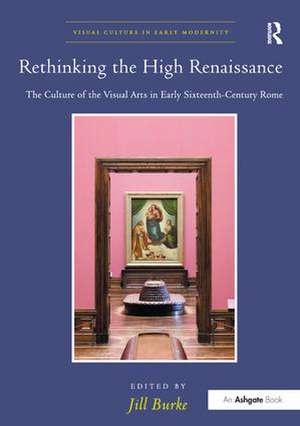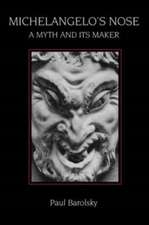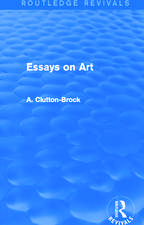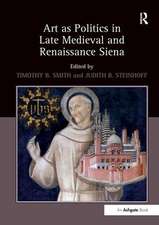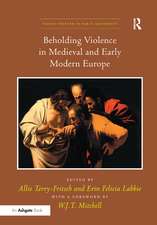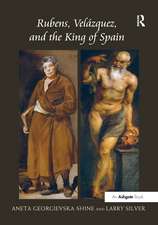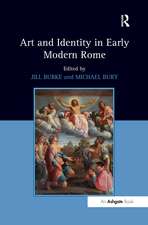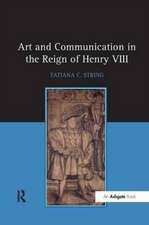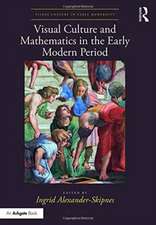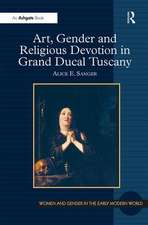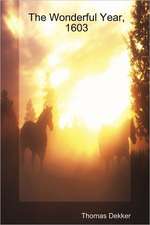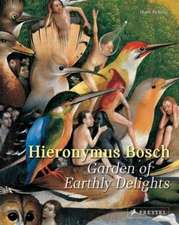Rethinking the High Renaissance: The Culture of the Visual Arts in Early Sixteenth-Century Rome: Visual Culture in Early Modernity
Editat de Jill Burkeen Limba Engleză Paperback – 11 noi 2016
| Toate formatele și edițiile | Preț | Express |
|---|---|---|
| Paperback (1) | 481.07 lei 6-8 săpt. | |
| Taylor & Francis – 11 noi 2016 | 481.07 lei 6-8 săpt. | |
| Hardback (1) | 1060.97 lei 6-8 săpt. | |
| Taylor & Francis – 28 mai 2012 | 1060.97 lei 6-8 săpt. |
Din seria Visual Culture in Early Modernity
-
 Preț: 310.85 lei
Preț: 310.85 lei - 9%
 Preț: 937.03 lei
Preț: 937.03 lei -
 Preț: 341.55 lei
Preț: 341.55 lei -
 Preț: 312.12 lei
Preț: 312.12 lei - 9%
 Preț: 949.21 lei
Preț: 949.21 lei - 22%
 Preț: 324.16 lei
Preț: 324.16 lei -
 Preț: 313.67 lei
Preț: 313.67 lei -
 Preț: 400.17 lei
Preț: 400.17 lei - 12%
 Preț: 343.55 lei
Preț: 343.55 lei - 22%
 Preț: 324.16 lei
Preț: 324.16 lei - 25%
 Preț: 769.92 lei
Preț: 769.92 lei - 13%
 Preț: 338.33 lei
Preț: 338.33 lei - 17%
 Preț: 259.98 lei
Preț: 259.98 lei - 22%
 Preț: 324.16 lei
Preț: 324.16 lei - 12%
 Preț: 339.18 lei
Preț: 339.18 lei - 25%
 Preț: 826.84 lei
Preț: 826.84 lei - 26%
 Preț: 819.90 lei
Preț: 819.90 lei - 25%
 Preț: 882.90 lei
Preț: 882.90 lei - 25%
 Preț: 829.69 lei
Preț: 829.69 lei - 22%
 Preț: 325.43 lei
Preț: 325.43 lei - 25%
 Preț: 853.03 lei
Preț: 853.03 lei - 13%
 Preț: 338.33 lei
Preț: 338.33 lei - 25%
 Preț: 824.40 lei
Preț: 824.40 lei - 13%
 Preț: 338.33 lei
Preț: 338.33 lei - 25%
 Preț: 826.01 lei
Preț: 826.01 lei - 25%
 Preț: 772.60 lei
Preț: 772.60 lei - 18%
 Preț: 1000.45 lei
Preț: 1000.45 lei - 25%
 Preț: 768.69 lei
Preț: 768.69 lei - 13%
 Preț: 338.33 lei
Preț: 338.33 lei - 25%
 Preț: 771.13 lei
Preț: 771.13 lei - 22%
 Preț: 324.16 lei
Preț: 324.16 lei - 25%
 Preț: 772.76 lei
Preț: 772.76 lei - 11%
 Preț: 347.33 lei
Preț: 347.33 lei - 25%
 Preț: 822.91 lei
Preț: 822.91 lei - 26%
 Preț: 765.84 lei
Preț: 765.84 lei -
 Preț: 481.07 lei
Preț: 481.07 lei - 12%
 Preț: 300.09 lei
Preț: 300.09 lei - 26%
 Preț: 820.73 lei
Preț: 820.73 lei - 25%
 Preț: 829.69 lei
Preț: 829.69 lei - 25%
 Preț: 826.84 lei
Preț: 826.84 lei - 25%
 Preț: 776.03 lei
Preț: 776.03 lei - 25%
 Preț: 828.07 lei
Preț: 828.07 lei
Preț: 481.07 lei
Nou
Puncte Express: 722
Preț estimativ în valută:
92.11€ • 95.91$ • 76.42£
92.11€ • 95.91$ • 76.42£
Carte tipărită la comandă
Livrare economică 13-27 februarie
Preluare comenzi: 021 569.72.76
Specificații
ISBN-13: 9781138272668
ISBN-10: 1138272663
Pagini: 408
Dimensiuni: 174 x 246 x 21 mm
Greutate: 0.45 kg
Ediția:1
Editura: Taylor & Francis
Colecția Routledge
Seria Visual Culture in Early Modernity
Locul publicării:Oxford, United Kingdom
ISBN-10: 1138272663
Pagini: 408
Dimensiuni: 174 x 246 x 21 mm
Greutate: 0.45 kg
Ediția:1
Editura: Taylor & Francis
Colecția Routledge
Seria Visual Culture in Early Modernity
Locul publicării:Oxford, United Kingdom
Cuprins
Contents: Preface; Inventing the High Renaissance from Winckelmann to Wikipedia: an introductory essay, Jill Burke; Part I Vantage Points: Teaching (and thinking about) the High Renaissance, with some observations on its relationship to Classical Antiquity, Brian A. Curran; Figments and fragments: Julius II's Rome, Suzanne B. Butters; Humanists, historians and the fullness of time in Renaissance Rome, Kenneth Gouwens; Cellini's Roma, Gwendolyn Trottein; On the unity/disunity of the arts: Vasari (and others) on architecture, David Cast. Part II Making the High Renaissance: Classicism, Conflation and Culmination: Bramante and the origins of the 'High Renaissance', Christoph Luitpold Frommel; Classical mistranslations: the absence of a modular system in Calvo's De Architectura, Angeliki Pollali; Giuliano da Sangallo between Florentine Quattrocento and Roman High Renaissance, Sabine Frommel; Perugino, Raphael and the decoration of the Stanza dell'Incendio, Michael Bury; Forgery, faith and divine hierarchy after Lorenzo Valla, Meredith J. Gill; The conception and design of Michelangelo's Sistine Chapel ceiling: 'wishing to shed a little light upon the whole rather than mentioning the parts', David Hemsoll; Pope Clement VII and the decorum of medieval art, Sheryl E. Reiss; Bibliography; Index.
Recenzii
'The volume deserves to be commended for its graceful approach to the High Renaissance, conveying the hazards but also the value of employing such a concept. By acknowledging the High Renaissance as a construct of extraordinary enduring power, and also by linking it to sixteenth-century practice and experience, this book encourages new ways of thinking for specialists and a broad interested public alike.' Sixteenth Century Journal
Notă biografică
Jill Burke is Senior Lecturer in the History of Art at the University of Edinburgh, UK.
Descriere
Exploring how we can reconceptualise the High Renaissance in a way that reflects how we research and teach today, this volume proposes new approaches to the art of the period. Contributors focus on Rome, the paradigmatic centre of the High Renaissance narrative, as they question notions of periodisation, reconsider the Renaissance relationship with classical antiquity, and ultimately reconfigure our understanding of 'high Renaissance style'.
